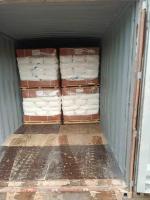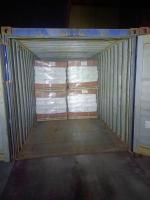Our Products
Polyacrylamide / the equivalent model of flopam fo4490sh can be replaced by Chinafloc C

Application of Cationic Polyacrylamide (FLOPAM FO4490)
Cationic polyacrylamide FLOPAM FO4490 is a high-performance, high-molecular-weight, water-soluble polymer specifically designed by SNF Floerger for solid–liquid separation in municipal and industrial wastewater treatment, sludge dewatering, and other clarification processes. The product belongs to the FLOPAM FO series, a family of cationic emulsion flocculants that combine strong cationic charge with excellent molecular weight to deliver efficient flocculation and water release in a wide variety of treatment systems. FLOPAM FO4490 is known for its rapid floc formation, strong bridging ability, and superior sludge dewatering performance, making it a preferred choice in wastewater treatment plants, mining operations, and food-processing industries.
1. Municipal and Industrial Wastewater Treatment
The primary application of FLOPAM FO4490 is in municipal wastewater treatment. It acts as a flocculant in both primary and secondary clarification steps, as well as in sludge thickening and dewatering. Municipal wastewater typically contains negatively charged suspended solids, organic matter, and microbial flocs that resist aggregation. FLOPAM FO4490, with its cationic charge, neutralizes these negative charges and bridges particles together to form dense, fast-settling flocs.
In primary clarification, FLOPAM FO4490 is dosed after coagulation to improve sedimentation efficiency and produce clearer effluent. This reduces organic load and turbidity before biological treatment. In secondary treatment, it enhances the settleability of activated sludge, reducing issues like bulking and floating sludge caused by filamentous bacteria. This leads to more stable operation and higher-quality effluent.
FLOPAM FO4490 also plays a critical role in industrial wastewater from sectors such as textiles, tanneries, pulp and paper, petrochemicals, and food processing. In these systems, it removes suspended solids, fats, oils, and other contaminants by promoting effective flocculation and sedimentation. The polymer’s versatility allows it to perform efficiently under a wide pH range (typically pH 4–9) and in variable salinity or organic load conditions.
2. Sludge Thickening and Dewatering
One of the most significant uses of FLOPAM FO4490 is in sludge dewatering—a key process for reducing the volume and disposal cost of sludge generated in wastewater treatment plants. The polymer is highly effective in conditioning both primary and biological sludge before mechanical dewatering using centrifuges, belt filter presses, screw presses, or chamber filter presses.
When added to sludge, the long-chain cationic polymer molecules of FLOPAM FO4490 bridge fine particles and bind free water within the sludge matrix. This results in rapid floc formation, better water release, and a more compact, drier sludge cake. The product’s optimized charge density ensures maximum water separation while minimizing polymer consumption. The drier sludge cake translates to lower transportation costs, improved disposal efficiency, and reduced environmental footprint.
Typical dosage rates range from 2 – 8 kg of polymer per dry ton of solids, depending on sludge characteristics and dewatering equipment type. FLOPAM FO4490’s emulsion form allows for easy dilution and fast dissolution, simplifying plant operations and ensuring consistent performance.
3. Mining and Mineral Processing
In mineral processing and mining operations, FLOPAM FO4490 is used as a flocculant and clarifier to enhance solid–liquid separation. Tailings and slurries from ore beneficiation processes often contain fine particles that settle slowly due to electrostatic repulsion. FLOPAM FO4490’s cationic charge neutralizes these particles and promotes rapid aggregation, forming large flocs that settle quickly and produce clear overflow water.
This polymer is suitable for clarifying process water in coal preparation, phosphate beneficiation, bauxite refining, and metal ore processing. It also assists in tailings thickening and dewatering, improving water recovery and minimizing the environmental footprint of tailings ponds. The flocculated sludge is easier to handle and dewater, supporting efficient water recycling and sustainable mine-water management.
4. Oil and Petrochemical Wastewater Treatment
FLOPAM FO4490 is widely applied in the oil and petrochemical sector for treating oily wastewater, produced water, and refinery effluents. Oil–water mixtures and emulsions are stabilized by surface charges that prevent separation. The cationic polymer neutralizes these charges and bridges fine oil droplets and solids, forming larger aggregates that separate rapidly either by sedimentation or flotation.
In dissolved air flotation (DAF) units, FLOPAM FO4490 enhances the attachment of air bubbles to flocs, improving floatability and scum removal efficiency. In oilfield operations, it is used to treat produced water and to improve oil–water separation in onshore and offshore facilities. Its resistance to salinity and high temperature makes it suitable for harsh oilfield environments.
5. Pulp and Paper Industry
In the paper industry, FLOPAM FO4490 serves as a retention and drainage aid, helping to retain fine fibers, fillers, and pigments in the paper sheet while improving water drainage on the wire section. It also acts as a fixative to neutralize anionic trash and stabilize wet-end chemistry. This ensures smoother machine operation, higher retention efficiency, and reduced chemical consumption.
Additionally, FLOPAM FO4490 improves sludge management in paper mills by conditioning primary and secondary sludge for dewatering. It reduces disposal costs and improves recovery of process water.
6. Food and Beverage Wastewater Treatment
FLOPAM FO4490 is suitable for food-processing wastewater, such as that from meatpacking, dairy, brewery, and sugar industries. These effluents contain high concentrations of suspended organic solids, fats, and proteins that are negatively charged and difficult to settle. The cationic polymer effectively destabilizes these particles, forming large flocs that can be separated by sedimentation or flotation.
Its use improves the clarity of treated water, reduces biological oxygen demand (BOD), and enhances the overall efficiency of the wastewater treatment process.
7. Product Characteristics and Advantages
-
Type: Cationic polyacrylamide emulsion
-
Appearance: Milky liquid
-
Charge density: Medium to high (optimized for sludge dewatering)
-
Molecular weight: Very high (ensures strong bridging and fast settling)
-
Active content: Approximately 40%
-
Effective pH range: 4 – 9
-
Solubility: Complete in water; easily diluted to 0.1–0.5 % solution
Key advantages include:
-
Excellent floc strength and fast settling rate.
-
High dewatering efficiency and reduced sludge volume.
-
Broad applicability across wastewater, mining, and industrial sectors.
-
Compatibility with inorganic coagulants such as alum, PAC, or ferric chloride.
-
Stable performance under variable process conditions.
Conclusion
Cationic polyacrylamide FLOPAM FO4490 is a versatile and efficient flocculant engineered to deliver superior performance in sludge dewatering, wastewater clarification, and industrial solid–liquid separation. Its high molecular weight and strong cationic charge enable rapid floc formation, high filtration rates, and significant water recovery across multiple industries.
Whether applied in municipal treatment plants, oil refineries, paper mills, or mining operations, FLOPAM FO4490 enhances process efficiency, reduces chemical costs, and minimizes environmental impact. Its reliability, adaptability, and effectiveness make it one of SNF’s most trusted and widely used cationic polyacrylamides for demanding water and sludge treatment applications.





